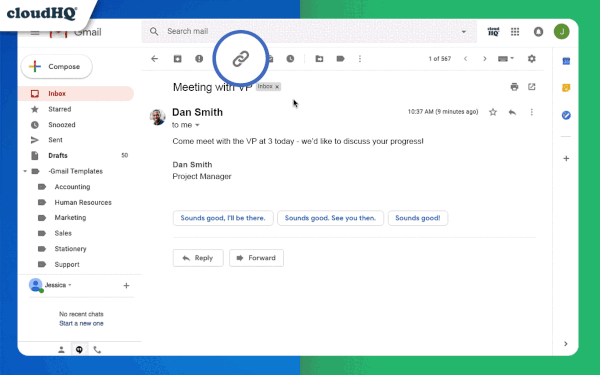This email tracking guide helps you understand how email trackers work, why they work, and how you can benefit from using them. Let’s start with some simple best practices to help you come across more intelligently than the average email sender so that you can stand out and get your desired results.
Email Tracking Guide
Let your email tracker guide your next steps so that you’re not going in blind. Here’s a nice email guideline flow for you:
1. Best Subject Lines
Make sure the ask or offer of your email is in your subject line.
Not sure what kind of email subjects to use? Try this email subject guide.
2. How to Structure an Email
Keep your email simple to understand.
Writing a good email is hard, but you can learn how to communicate more effectively over email with this guideline about how to write an email like a boss.
3. Get Notified When Your Email is Read with an Email Tracker
Get notified by your email tracker to get your timing right and don’t waste small window of opportunity. In the Free Email Tracker by cloudHQ, you can easily get an email or text notification whenever your email is read.
4. Prune Your Email List
If you send an email recipient 3 emails and they haven’t opened any of them, remove them from your email list.
They’re either the wrong person, or what you’re offering has no value to them. Don’t spend time getting hung up on this section, just remove them and move on to someone who is more receptive.
5. Use an Email Link to Refer Back to Your First Email
When your email recipient opens your email, strike hard and follow up quickly.
Don’t follow up asking “Did you see my last email?” The answer will always be “No,” and now you’ve become a nuisance to them.
Make their job easy to reply back to you. If you must refer back to your original email message, do it with an email link. They’re easy to use, and you’ll make yourself appear useful and someone they’d want to work with.

Benefits of Using an Email Tracker
An email tracker is important to use if you want to approach your email recipient in an intelligent way so that you can get your desired result more quickly.
To establish any relationship, you need to make yourself useful. Understanding who reads your emails and who isn’t will help provide context to both of you: the email recipient and email sender. Here’s a list of what you can expect when using an email tracker:
- Who read your email?
- When did they read your email?
- How many times did they read your email?
- What links did they click on?
With this guide, you’ll be able to clearly understand your audience’s behavior and adjust your approach to increase your success.